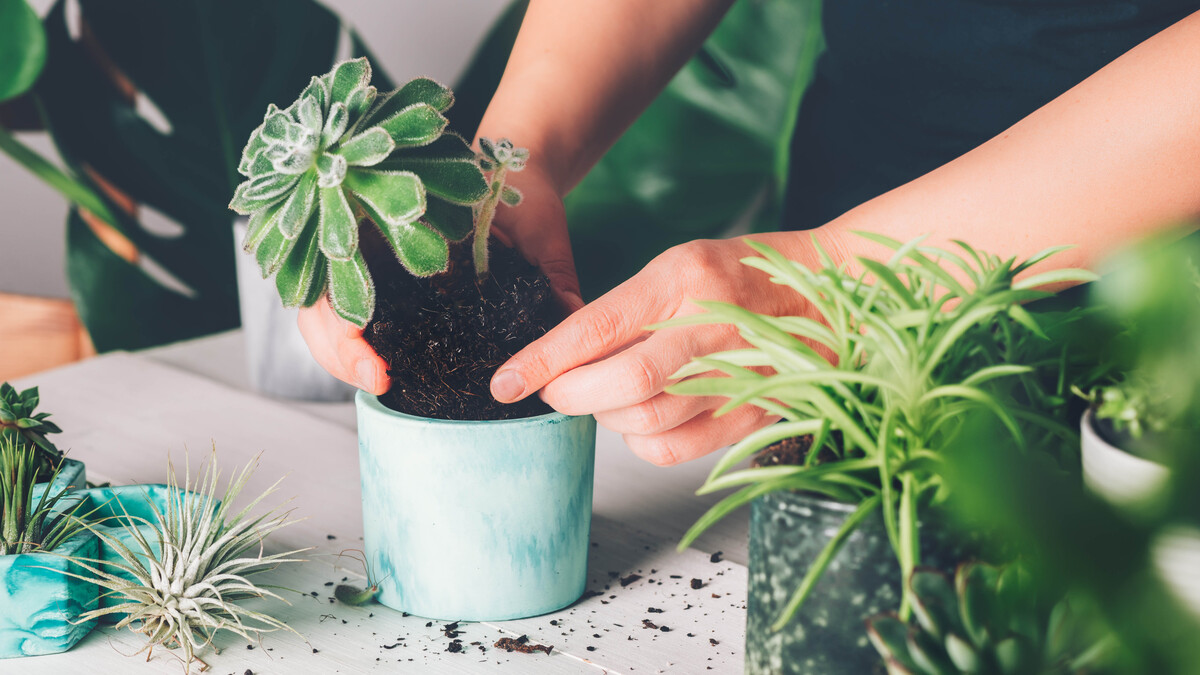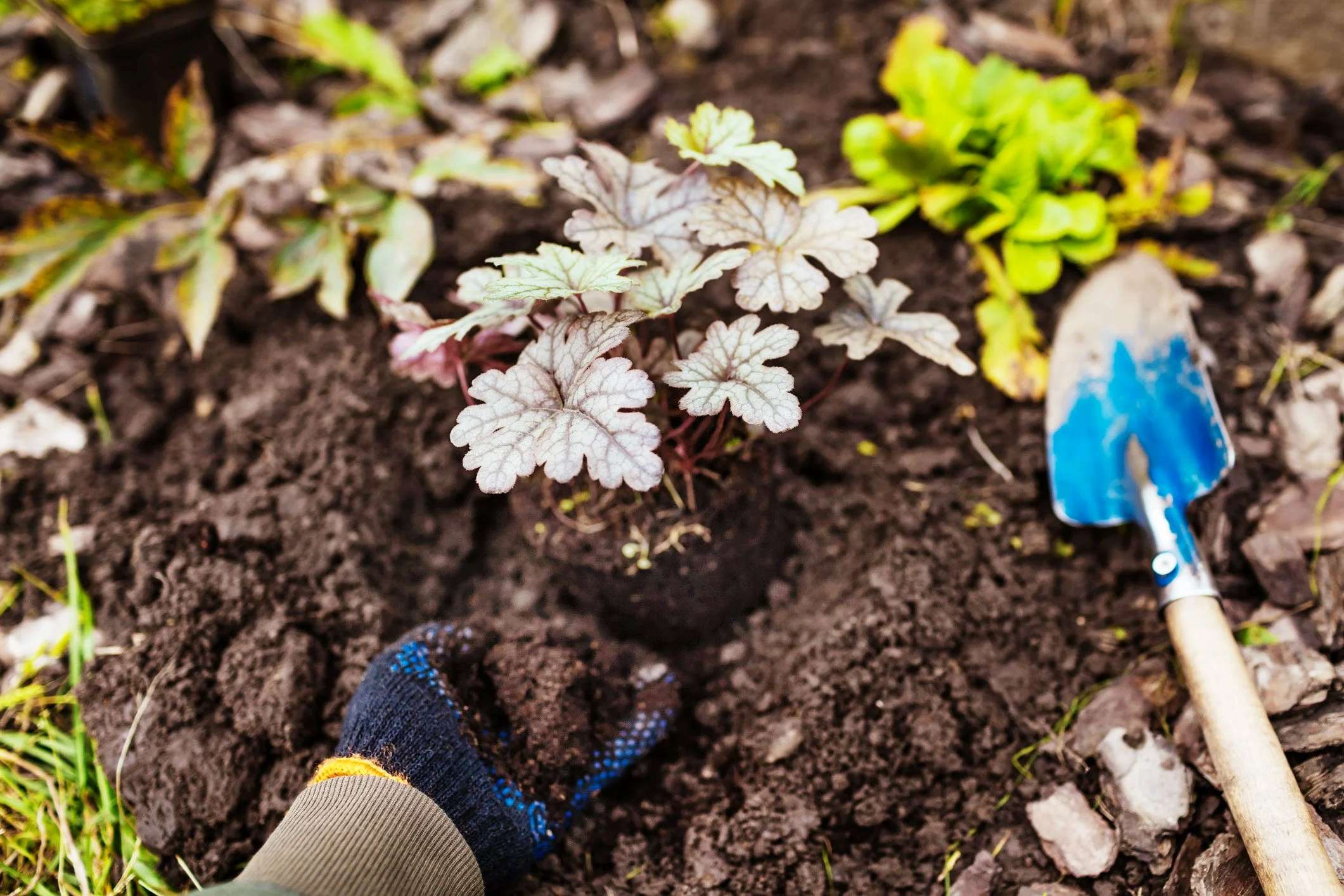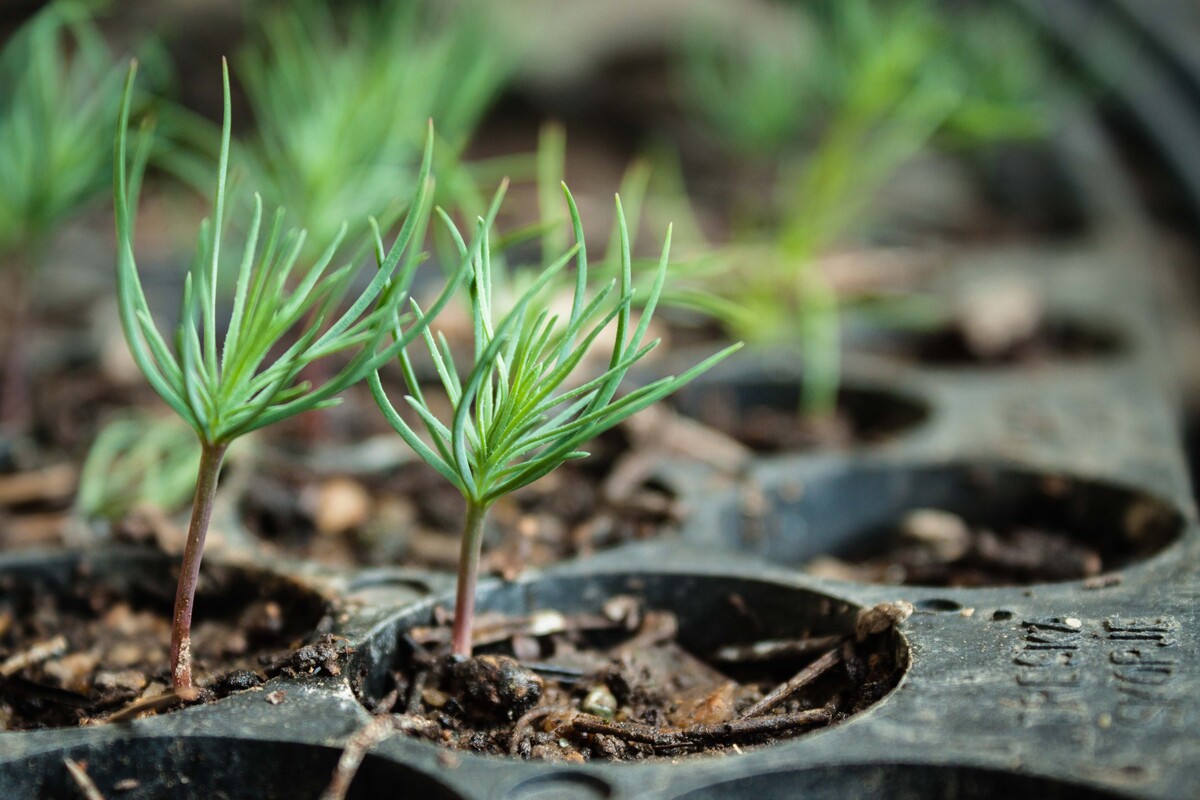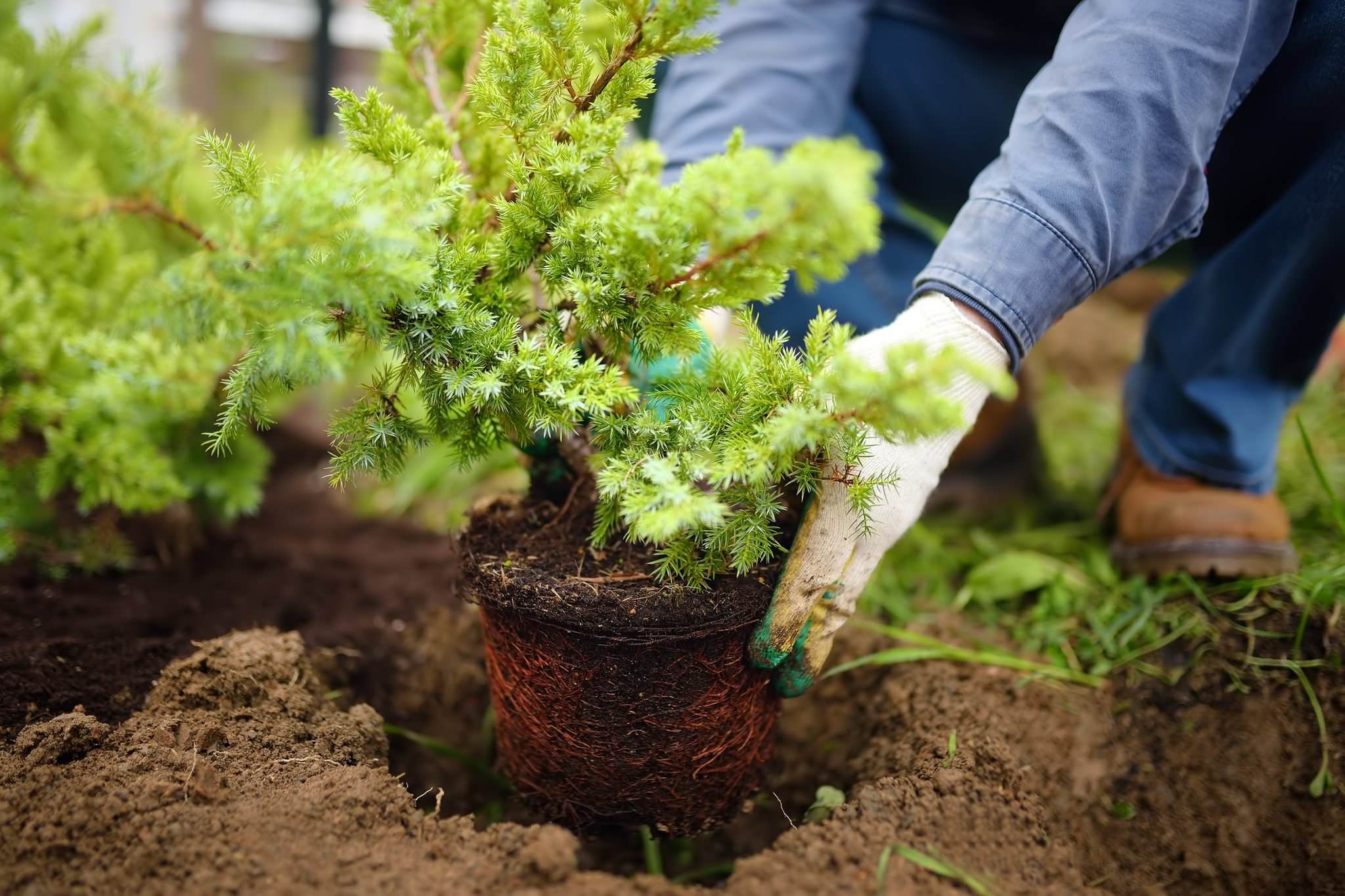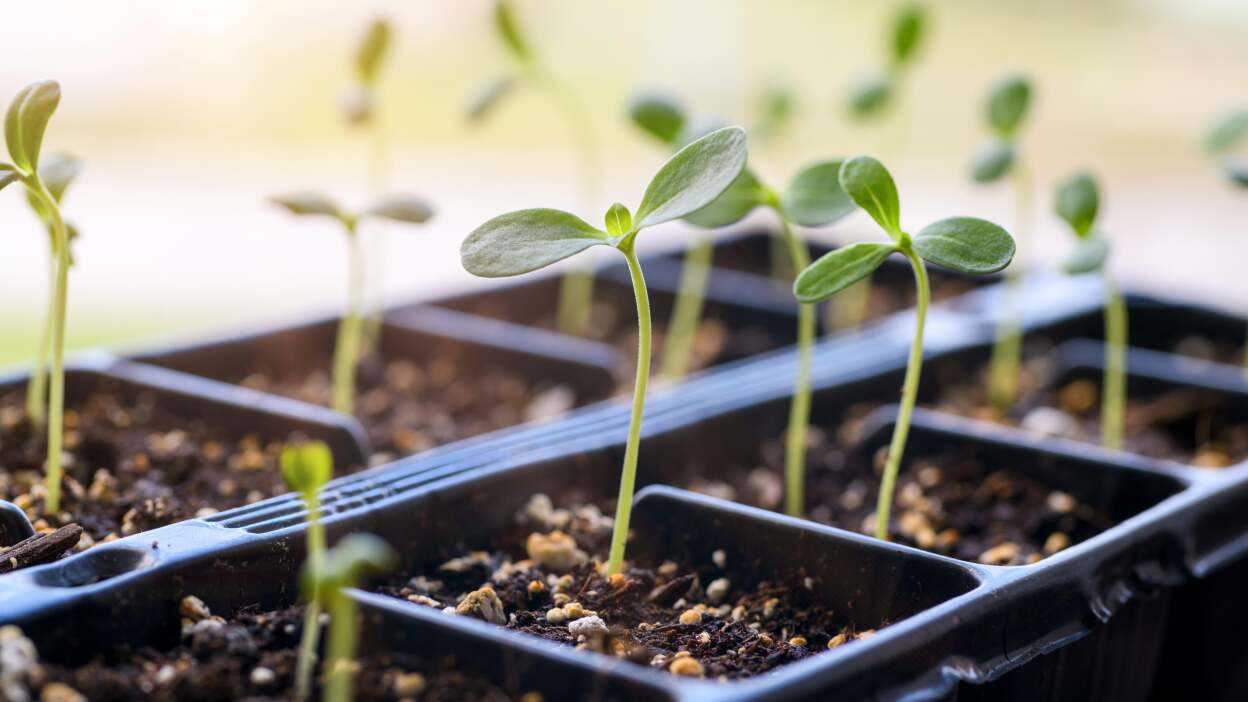Home>Types of Gardening>Ornamental Gardening>Can You Repot A Christmas Cactus When It’s Blooming


Ornamental Gardening
Can You Repot A Christmas Cactus When It’s Blooming
Modified: February 9, 2024
Discover when and how to repot a blooming Christmas cactus in this informative guide on ornamental gardening. Maximize your plant's health and longevity.
(Many of the links in this article redirect to a specific reviewed product. Your purchase of these products through affiliate links helps to generate commission for Chicagolandgardening.com, at no extra cost. Learn more)
Table of Contents
Introduction
The Christmas cactus (Schlumbergera spp.) is a popular ornamental plant known for its vibrant blooms during the festive season. With its beautiful cascading flowers in hues of pink, red, and white, it adds a touch of elegance to any indoor space. While the Christmas cactus is a low-maintenance plant, occasional repotting may be necessary to promote its growth and ensure its long-term health.
Repotting a Christmas cactus while it’s blooming can be a daunting task for many ornamental gardeners. The fear of disrupting the blooming process or damaging the plant often causes hesitation. However, with the right knowledge and careful planning, repotting your Christmas cactus can be done successfully, even when it’s in full bloom.
In this article, we will explore the factors to consider before repotting, provide a step-by-step guide for repotting a blooming Christmas cactus, offer tips for success during the blooming period, and highlight common mistakes to avoid. Whether you’re a beginner or an experienced gardener, this article will equip you with the necessary information to confidently repot your Christmas cactus without compromising its blooming beauty.
Understanding the Christmas Cactus
The Christmas cactus is a succulent native to the South American rainforests. It belongs to the genus Schlumbergera and is named after the French cactus collector Frédéric Schlumberger. Unlike typical cacti, it doesn’t have spines, but rather flattened and segmented leaf-like stems.
One interesting fact about the Christmas cactus is that it is classified as a “short-day” plant, meaning it requires long periods of uninterrupted darkness to initiate the blooming process. This is why it typically flowers during the winter months when the days are shorter. The blooming period can last several weeks, making it a truly remarkable houseplant during the holiday season.
The Christmas cactus is known for its ability to adapt to various indoor environments, making it an ideal choice for beginner gardeners. It thrives in well-draining soil and prefers indirect bright light. Overexposure to direct sunlight can lead to leaf burn, so placing it near a north or east-facing window is ideal.
When it comes to watering, the Christmas cactus prefers slightly moist soil. Overwatering can cause root rot, so it’s essential to allow the top inch of soil to dry out before watering again. During the blooming period, it’s important to avoid any sudden changes in temperature or exposure to drafts, as this can cause the flowers to wilt prematurely.
The Christmas cactus can live for many years if cared for properly. It has an impressive ability to regenerate from cuttings, allowing you to propagate new plants and share the joy of these beautiful blooms with friends and family.
In the next sections, we will delve into the factors to consider before repotting your Christmas cactus during its blooming period. Understanding these factors will ensure that you provide the best conditions for your beloved plant and avoid any unnecessary stress or damage during the repotting process.
Factors to Consider Before Repotting
Repotting a blooming Christmas cactus requires careful consideration of several factors to ensure the continued health and well-being of the plant. Here are some important factors to keep in mind:
- Blooming stage: It’s essential to identify the stage of blooming your Christmas cactus is in before attempting to repot it. If the plant is in full bloom, it’s best to wait until the flowering period is over. Repotting during the blooming stage can disrupt the plant’s energy allocation and may cause premature flower drop.
- Pot size: Assess the current size of your Christmas cactus and determine if it has outgrown its current pot. If the roots are crowded and circling the bottom of the container, it’s a good indication that repotting is necessary. However, if the pot size is proportionate to the plant’s size, it may not need immediate repotting.
- Timing: While repotting during the blooming period is possible, it’s generally recommended to wait until after the flowering period ends. This allows the plant to focus its energy on blooming rather than acclimating to a new container. Ideally, repotting should be done during the plant’s dormancy period in early spring.
- Soil preparation: Prepare a well-draining soil mix suitable for succulents. A mixture of peat moss, perlite, and coarse sand works well. Avoid using regular garden soil, as it tends to retain too much moisture and can cause root rot in the Christmas cactus.
- Watering and humidity: Before repotting, ensure that the plant is adequately hydrated. Water it a day or two before repotting to make the root ball easier to handle. Additionally, providing a slightly more humid environment after repotting can aid in the plant’s recovery and minimize stress.
Consider these factors carefully before proceeding with the repotting process. Taking the time to assess the plant’s needs and providing the appropriate conditions will increase the likelihood of a successful repotting experience without disrupting the Christmas cactus’s beautiful blooms. In the following section, we will provide a step-by-step guide for repotting a blooming Christmas cactus.
Step-by-Step Guide for Repotting a Blooming Christmas Cactus
Repotting a blooming Christmas cactus may seem challenging, but with the right approach and care, it can be done successfully. Follow these step-by-step instructions to repot your Christmas cactus without disrupting its blooms:
- Choose the right timing: While it’s generally recommended to repot during the plant’s dormancy period in early spring, if repotting during blooming is necessary, choose a time when the flowers have started to fade, indicating the end of the blooming cycle. This minimizes the risk of shock to the plant.
- Gather the necessary materials: Prepare a new pot that is slightly larger than the current one, fresh well-draining soil mix specifically formulated for succulents, gardening gloves, a clean and sharp knife or pruners, and a watering can or spray bottle.
- Prepare the new pot: Fill the new pot with a layer of fresh soil mix, leaving enough space to accommodate the root ball of the Christmas cactus.
- Inspect the root system: Gently remove the Christmas cactus from its current pot, being cautious not to damage the blooms or stems. Gently brush away excess soil to expose the root system and assess its health. Trim any damaged or dead roots if necessary.
- Place in the new pot: Carefully place the Christmas cactus into the prepared pot, ensuring that the root ball sits slightly above the rim of the pot. This prevents excessive moisture accumulation in the crown, which can promote rot.
- Add fresh soil: Fill the pot with the remaining soil mix, gently pressing it down to secure the plant in place and eliminate air pockets. Leave a small space at the top to allow for watering.
- Water lightly: Give the Christmas cactus a light watering to settle the soil around the roots. Avoid overwatering, as this can lead to root rot. Allow the soil to dry out slightly before the next watering.
- Provide post-repotting care: Place the repotted Christmas cactus in a bright location with indirect sunlight. Avoid direct sunlight or drafts. Maintain a slightly more humid environment by misting the plant occasionally or placing it near a tray filled with water and pebbles. This aids in the plant’s recovery.
By following these steps, you can successfully repot your Christmas cactus without causing harm or undue stress. Remember to monitor the plant closely in the days following repotting to ensure it adjusts well to its new environment. In the next section, we will provide some tips to further ensure a successful repotting process during the blooming period.
Tips for Successful Repotting during Blooming Period
Repotting a Christmas cactus during its blooming period requires extra care and attention. To increase the chances of a successful repotting without compromising the blooms, consider these helpful tips:
- Choose a relaxed schedule: Plan the repotting when you have enough time and are not rushed. Performing the task calmly and with care ensures minimal disturbance to the plant.
- Support the blooming stems: If the Christmas cactus has long, trailing stems with blooms, gently secure and support them with plant ties or soft string before repotting. This prevents damage to the blooms during the process.
- Handle with care: When removing the Christmas cactus from its current pot, handle it gently and avoid gripping or pulling the stems or flowers. Hold the plant by the base or use gardening gloves to prevent any accidental damage.
- Minimize root disturbance: While checking the root system, aim to disturb the roots as little as possible. Avoid excessive manipulation or shaking of the root ball to minimize stress on the plant.
- Monitor moisture levels: Pay careful attention to the watering routine after repotting. Aim to keep the soil slightly moist but not saturated. Overwatering can lead to root rot, while under-watering can cause stress to the plant.
- Provide proper lighting: Place the repotted Christmas cactus in a location with bright, indirect light. Avoid direct sunlight, as it can scorch the leaves and flowers. This ensures the plant continues photosynthesis and retains its energy during the blooming period.
- Maintain optimal temperature and humidity: Keep the repotted Christmas cactus in an environment with consistent temperatures between 60-70°F (15-21°C). Avoid sudden temperature fluctuations or exposure to drafts. Additionally, maintaining a slightly more humid environment can aid in the plant’s recovery.
- Observe and adjust: Monitor the Christmas cactus closely in the days following repotting. Watch for any signs of stress, such as wilting or drooping flowers or leaves. If needed, make adjustments to the watering, lighting, or humidity levels to help the plant recover.
By following these tips, you can navigate the repotting process during the blooming period with greater success. Remember, being mindful of the plant’s needs and providing appropriate care will help ensure a seamless transition for your Christmas cactus. In the next section, we will highlight some common mistakes to avoid during the repotting process.
Common Mistakes to Avoid
While repotting a blooming Christmas cactus can be a bit challenging, there are some common mistakes that you should avoid to prevent any harm or stress to the plant. By being aware of these mistakes, you can ensure a successful repotting process:
- Repotting during the peak of blooming: Attempting to repot the Christmas cactus when it’s in full bloom can disrupt the natural blooming cycle and cause premature flower drop. It’s best to wait until the flowering period is over before repotting.
- Using the wrong soil mix: Avoid using regular garden soil or heavy potting mixes for the Christmas cactus. These soil types retain too much moisture and can cause root rot. Instead, opt for a well-draining potting mix specifically formulated for succulents.
- Overwatering after repotting: While it’s essential to water the Christmas cactus after repotting, be cautious not to overwater. Excessive moisture can lead to root rot. Allow the soil to dry out slightly between waterings and adjust the watering frequency as needed.
- Not providing proper lighting: The Christmas cactus thrives in bright, indirect light. Placing it in a location with inadequate light or subjecting it to direct sunlight can cause leaf burn. Ensure that the repotted plant receives the appropriate amount of light to maintain its health and blooming potential.
- Subjecting the plant to temperature extremes: Avoid exposing the Christmas cactus to extreme temperature changes or drafts, particularly after repotting. Sudden temperature fluctuations or cold drafts can cause stress and negatively impact the plant’s growth and blooming performance.
- Disturbing the roots excessively: When removing the Christmas cactus from its current pot and placing it in the new pot, handle the plant and its roots with care. Excessive manipulation or shaking of the root ball can damage the delicate roots and lead to transplant shock.
- Skipping the post-repotting care: After repotting, it’s crucial to provide proper care and monitoring. Skipping the post-repotting care, such as adjusting watering, lighting, and humidity levels, can hinder the plant’s recovery and increase the chances of transplant stress.
By avoiding these common mistakes, you can ensure a smoother repotting process for your blooming Christmas cactus. Remember to be patient and observant, allowing the plant to acclimate to its new pot and providing the necessary care for its continued growth and blooming success. In the following section, we will wrap up the article on repotting a blooming Christmas cactus.
Conclusion
Repotting a blooming Christmas cactus may seem like a daunting task, but with the right knowledge and approach, it can be done successfully. Understanding the factors to consider before repotting, following a step-by-step guide, and implementing helpful tips can ensure a smooth transition for your plant without compromising its beautiful blooms.
Before repotting, evaluate the blooming stage of your Christmas cactus and assess its pot size to determine if repotting is necessary. Choose the right timing, gather the necessary materials, and handle the plant with care during the repotting process. Providing adequate post-repotting care, such as proper lighting, temperature, and humidity levels, also contributes to the plant’s recovery and overall health.
Avoid common mistakes like repotting during the peak of blooming, using the wrong soil mix, overwatering, neglecting lighting needs, subjecting the plant to temperature extremes, disturbing the roots excessively, and skipping post-repotting care.
Remember, repotting a blooming Christmas cactus can be a rewarding experience that promotes the long-term health and vitality of the plant. By providing the necessary attention, your Christmas cactus will continue to delight you with its vibrant blooms for many years to come.
So go ahead, armed with your newfound knowledge and confidence, and embark on the journey of repotting your blooming Christmas cactus. Enjoy the process and the beauty that comes with nurturing your beloved plant.
